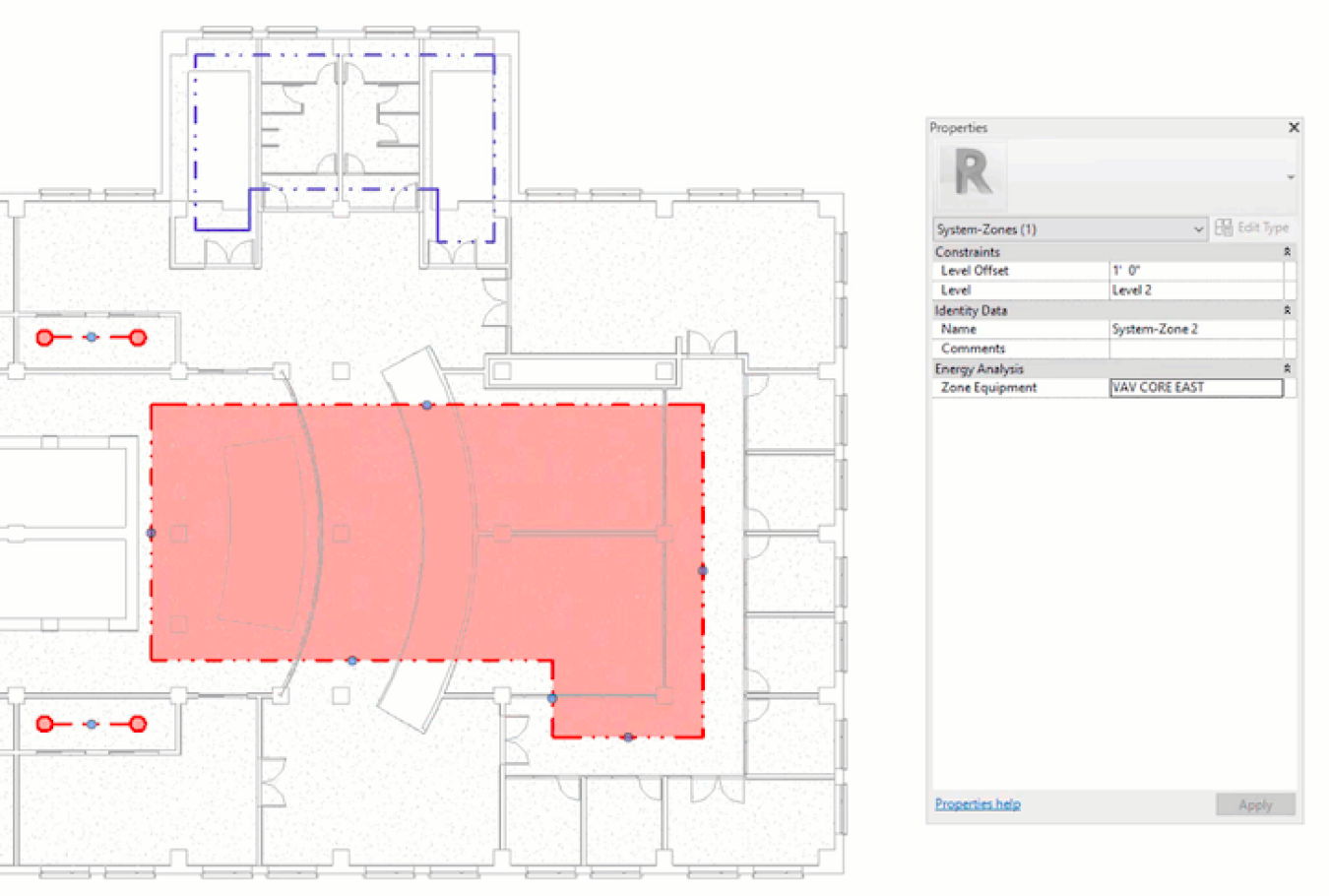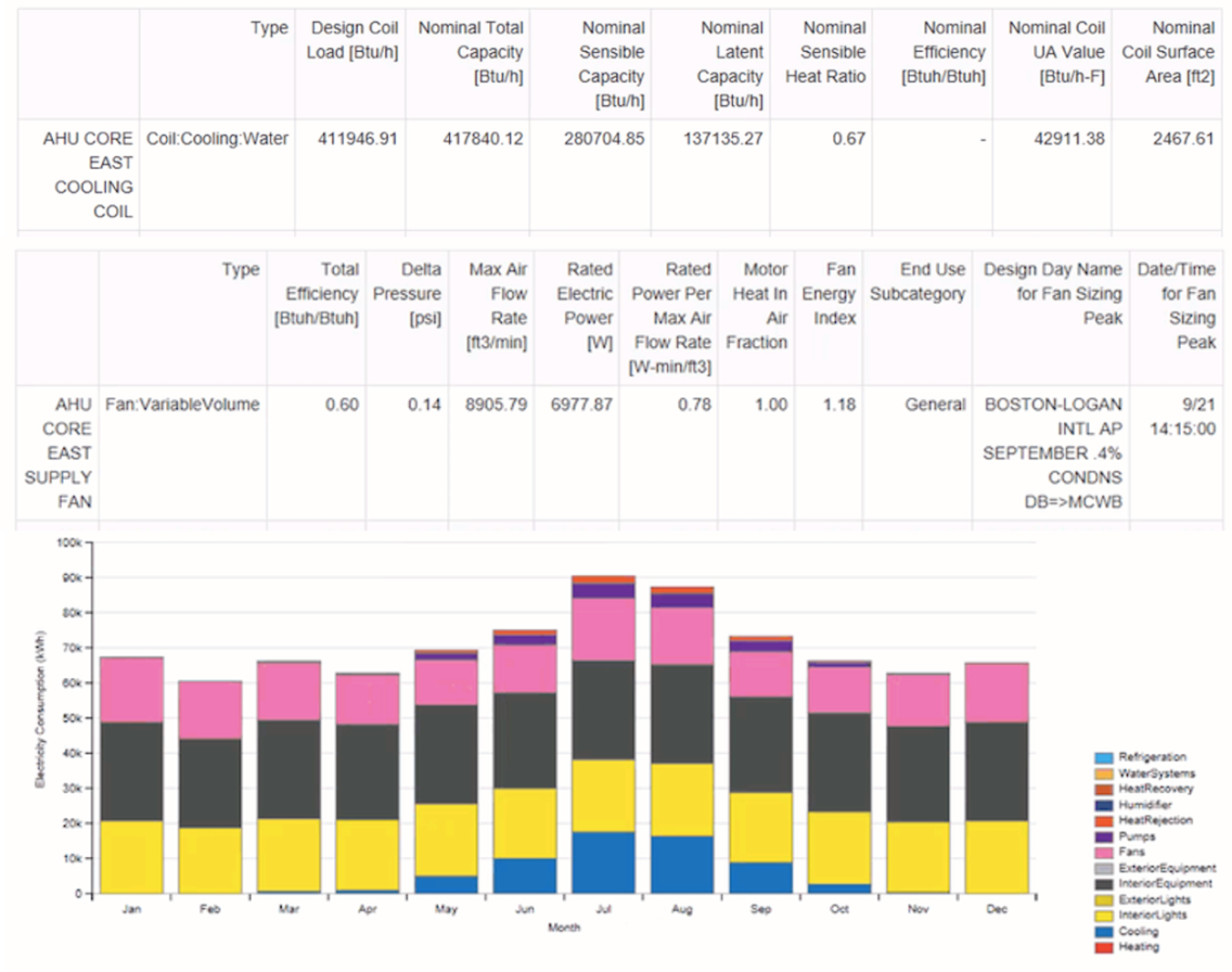New Systems Analysis capabilities use EnergyPlus and the OpenStudio SDK to allow Revit users to simulate detailed HVAC systems.
September 30, 2019Autodesk's Revit building information modeling (BIM) software is the most commonly used 3D building design and construction documentation tool in the United States. When you see a new commercial building going up, it was likely designed using Revit.
For several years now, Revit had allowed designers to analyze the annual and peak heating and cooling loads of their designs using EnergyPlus, BTO’s open-source building energy modeling engine. Loads analysis uses an idealized HVAC system that simply tabulates these loads at each time interval and then meets them with unlimited capacity. It provides architects with directional guidance, steering them towards the load-reducing building shapes, space plans, and envelope designs that are the bones of any energy-efficient building.
Last month, Autodesk released Revit 2020.1. One of the main new features of this update is Systems Analysis, the ability to simulate designs with detailed HVAC systems. Systems Analysis allows designers to group building areas into thermal zones, and then connect those zones to any one of a number of standard HVAC systems, providing the ability to define anything from packaged single- and multi-zone systems with gas or electric heating and DX cooling, to larger complex systems with heating and cooling coils served by hot and chilled water from central plants, to radiant systems with dedicated ventilation units. Systems Analysis provides default component efficiencies that are typical to high performance systems, which the designer has the option to override. EnergyPlus then automatically sizes the components to meet heating, cooling, and ventilation loads.


With detailed rather than idealized HVAC systems, designers can calculate energy use and cost, in addition to zone conditions that serve as the basis for occupant comfort. These details can paint a more realistic picture of actual building performance and provide feedback that is not only directional, but also supports quantitative project decision making. Reducing thermal loads is a good directional strategy, but how low do these loads need to be? Without simulating an HVAC system, it is difficult to know whether a building can meet an energy use target. Similarly, it is difficult to compare the costs of additional load-reducing envelope features, like higher-performance windows against the costs of the smaller HVAC components they enable.
The decisions that architects make early in the design process orientation, like shape and height and envelope characteristics, largely determine the energy efficiency of the final building. There is only so much an HVAC system can do to overcome a poorly designed envelope. Systems Analysis will allow architects and engineer to make these decisions—and those related to system selection and sizing—with greater confidence from a more realistic and quantitative footing.
“Autodesk has a long history supporting EnergyPlus and using it to develop different analysis solutions. This is by far the most significant step we’ve made to date—HVAC system selection, sizing, annual energy and comfort analysis is now an integral part of Revit,” said Ian Molloy, a Senior Product Line Manager at Autodesk. “Systems Analysis isn’t just about doing the same analysis you can already do in other ways, it’s about closing the critical gap between architect and engineer. We believe it will help deliver better buildings through more collaborative and integrated workflows.”
To develop this new capability, Autodesk used the OpenStudio Software Development Kit (SDK). OpenStudio imports Revit data in gbXML format to create the basic model, then applies OpenStudio Measures to articulate HVAC systems and create variants for parametric analysis. As with other OpenStudio-based tools, users can create their own custom Measures for model transformation or reporting. Autodesk leveraged a Technology Commercialization Fund (TCF) award to obtain integration assistance from the U.S. Department of Energy’s (DOE) National Renewable Energy Laboratory (NREL).
Molloy continued, “EnergyPlus brings great credibility and the fact that everything works through gbXML and the OpenStudio SDK makes it open and easily extensible. DOE and NREL deserve credit and thanks for this vision as well as for the technical guidance and partial financial support they’ve provided towards this collaboration.”

